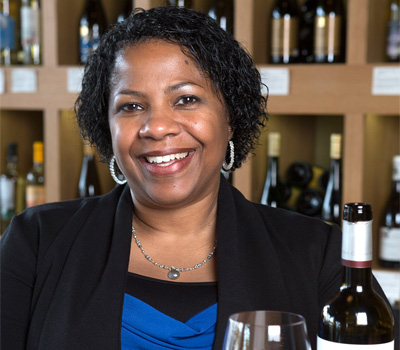Tonya Pitts moved to San Francisco after college and worked as a server at Zuni Café and Stars before turning her focus to wine. For the last six year’s she’s run the wine program at One Market, the city’s most ambitious program devoted to US wines.


On running (almost) all domestic
We’re all domestic, except for the Somm’s Corner [of the wine list]. That’s anything and everything I like. The theme now is riesling. I wasn’t able to participate in the Summer of Riesling so I decided to do an autumn and winter of riesling; it works this time of year as well! So I have riesling from all over the world, with some available by the glass.
I’m pouring the Calder Rossi Vineyard Riesling from Rutherford and the [Chateau Ste. Michelle] Eroica. Someone who wants just a little more residual sugar can get the Eroica. For some, it wasn’t round or lush or sweet enough. That’s when I talk people into a bottle of auslese.
On coastal pinot
When I start talking about the Sonoma Coast, my markers are Hirsch and Peay. I start talking about elevations, too, with guests, talking about what it’s like standing there in the vineyard. At Peay, it’s super wind-swept, it might knock you down. Hirsh is more rolling hills, a little warmer, but you still get some of that fog. And that comes through in the wines as well.
On zinfandel
I think the face of zinfandel has changed slowly but surely in the last few years. Sometimes guest will come in still thinking zinfandel is a super-concentrated, high alcohol beverage that’s just supposed to knock you out and knock you down, and more consumers are realizing that zinfandel is more a cousin of Italian wine. (Now we’re finding that it’s not actually from Italy but Croatia, and we’ll find that connection more too as people start getting into Croatian wines.) People are finding that it’s a light or medium-bodied wine that’s sometimes actually a field blend, sometimes almost like a pinot noir—they can be more alike than not. I like [Ridge’s] Three Valleys because it bridges the gap between so many flavor profiles. If you want to sip it by itself you can do that, if you want to pair it with food you can do that too but you don’t become very full, because everything is really balanced.
On selling California wines with age
I have an Old and Rare section that I put together when we had our 20th anniversary a few years ago. I found as much 1993 California wine as I could, and one Washington wine, an Andrew Will cabernet. And that kind of morphed into its own section: wines that were older than the year 2000. I’ve gone to Michael Deller’s cellar—he’s the owner of restaurant group—and we’ve picked vintages going back to 1974, and put together a list. Some are bigger names, some are smaller. It’s been a lot of fun having guests try those wines and educating them on the history of California winemaking and what that looks like and tastes like.
There are still a lot of people who want the broader, fruit-forward wines. I recently had someone who was sitting on the fence, who was more of a current-release drinker but had had some older vintages. [The table ordered an older wine] and it made them stop and sit and think about what they were drinking—having had this vineyard from other producers, but not that old. They weren’t sure they were going to enjoy it and they ended up really enjoying it. I ended up opening up a few bottles of that wine for the group—the 2001 Jade Mountain Caldwell Vineyard Merlot. I had decided to put it [in Old and Rare] because it didn’t quite fit with the merlot section.
Longtime senior editor at Wine & Spirits magazine, Luke now works for the Stanford Technology Ventures Program.
















